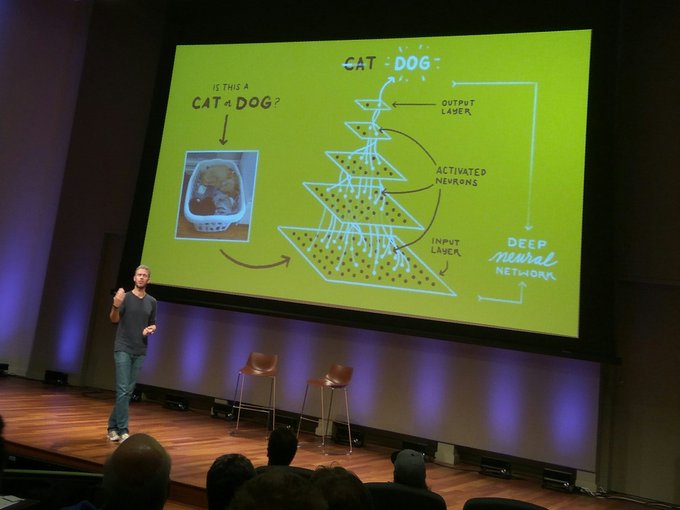Google Reinvented Itself As A Machine Learning Company
DevFestDC, organized by the guys from Google Dev Group DC, happened few days ago at Virginia’s Capital One headquarters.
The whole event was organized really well and I truly enjoyed some speeches. The ones related to the new Google’s machine learning API especially piqued my interest.
Google as a machine learning first company
After some reflection, I have the impression that Google has changed and taken a big step to become a machine learning first company.
In their workshops, Google introduced their machine learning API and performed some demos that showed how fast and accurately their API can extract meta information from images or to simply translate speech to text.
I remember back in the 2007 when I was building tools using the Loquendo SDK (now adquired by Nuance) for an automatic speech recognition system, and how hard and imprecise speech recognition was at that time. So I was amazed when I saw the results Google promises its speech API can deliver.
 Introduction to Google Machine Learning API by @bretmcg at #DevFestDC
Introduction to Google Machine Learning API by @bretmcg at #DevFestDC
I can’t imagine how excited (or angry) PhDs working on pattern recognition and image processing with the results of the Google Cloud Vision API must be now. From an image, the API allows you to extract lots of information, like location, facial recognition, descriptive related tags, and other data.
It kind of makes sense for me now, back to 2001, when the Microsoft researchers Banko and Brill affirmed in a paper that the more data your model has, the more increase the accuracy of the model. And if there is anyone able to have access to a huge amount of data and used it efficently, that is the people from Google.
I believe that the accuracy and good performance of Google’s Machine Learning API is due in a big part to the power of data. As Google’s Research Director Peter Norvig has said, “We don’t have better algorithms than anyone else; we just have more data.”.
So guys, now you can expect to be able to use machine learning functionalities in almost every tool provided by Google. Let’s say, for instance, that in your Google Photos account, you will be able to display pictures taken in a specific city by just searching the work ‘city’ without needing to add metadata to your files.
TensorFlow
Some last thoughts: the last month I have been focused on finishing Andrew Ng’s Coursera class on Machine Learning. Although it is very well-explained for students who don’t have a high level of statistics, math and computer science, it takes some effort and commitment to follow the class and finish it.
And now it’s time for me to play around with Google’s TensorFlow, and check out if it delivers what the people from Google promise: an easy, straightforward way for non-machine learning experts to train computers to perform machine learning tasks.